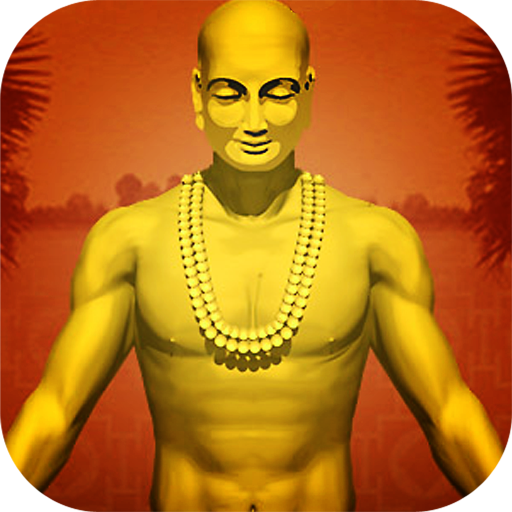

Pranayama Kapalabhati Yoga Breathing - Prana27
健康塑身 | TNX Apps
在電腦上使用BlueStacks –受到5億以上的遊戲玩家所信任的Android遊戲平台。
Play Pranayama Kapalabhati Yoga Breathing - Prana27 on PC
Breath in and you will feel how relaxed you become.
Pranayama (Prāṇāyāma) is the practice of breath control in yoga. In modern yoga as exercise, it consists of synchronising the breath with movements between asanas, but is also a distinct breathing exercise on its own, usually practised after asanas.
Kapalabhat, also called breath of fire, is an important Shatkarma, a purification in hatha yoga. The word kapalabhati is made up of two Sanskrit words: kapal meaning 'skull', and bhati meaning 'shining, illuminating'. The organs in and under the skull, mainly the brain, small brain and any of the spaces inside the head that are connected to the back of the nose, are influenced in a good manner.
One should know how to do Kapalabhati Pranayama in a proper manner. It is intended mainly for cleaning the cranial sinuses but has many other effects including curing anemia, according to the Gheranda Samhita and other sources.
The Technique of Kapalabhati involves short and strong forceful exhalations and inhalation happens automatically. There are three forms of Kapalabhati:
Vatakrama kapalabhati, a practice similar to the Pranayama technique of Bhastrika, except that exhalation is active while inhalation is passive, the opposite of normal breathing.
Vyutkrama kapalabhati, a practice similar to Jala neti, it involves sniffing water through the nostrils and letting it flow down into the mouth, and then spitting it out.
Sheetkrama kapalabhati, can be considered the reverse of Vyutkrama kapalabhati, in which water is taken through the mouth and expelled through the nose.
Pranayama (Prāṇāyāma) is the practice of breath control in yoga. In modern yoga as exercise, it consists of synchronising the breath with movements between asanas, but is also a distinct breathing exercise on its own, usually practised after asanas.
Kapalabhat, also called breath of fire, is an important Shatkarma, a purification in hatha yoga. The word kapalabhati is made up of two Sanskrit words: kapal meaning 'skull', and bhati meaning 'shining, illuminating'. The organs in and under the skull, mainly the brain, small brain and any of the spaces inside the head that are connected to the back of the nose, are influenced in a good manner.
One should know how to do Kapalabhati Pranayama in a proper manner. It is intended mainly for cleaning the cranial sinuses but has many other effects including curing anemia, according to the Gheranda Samhita and other sources.
The Technique of Kapalabhati involves short and strong forceful exhalations and inhalation happens automatically. There are three forms of Kapalabhati:
Vatakrama kapalabhati, a practice similar to the Pranayama technique of Bhastrika, except that exhalation is active while inhalation is passive, the opposite of normal breathing.
Vyutkrama kapalabhati, a practice similar to Jala neti, it involves sniffing water through the nostrils and letting it flow down into the mouth, and then spitting it out.
Sheetkrama kapalabhati, can be considered the reverse of Vyutkrama kapalabhati, in which water is taken through the mouth and expelled through the nose.
在電腦上遊玩Pranayama Kapalabhati Yoga Breathing - Prana27 . 輕易上手.
-
在您的電腦上下載並安裝BlueStacks
-
完成Google登入後即可訪問Play商店,或等你需要訪問Play商店十再登入
-
在右上角的搜索欄中尋找 Pranayama Kapalabhati Yoga Breathing - Prana27
-
點擊以從搜索結果中安裝 Pranayama Kapalabhati Yoga Breathing - Prana27
-
完成Google登入(如果您跳過了步驟2),以安裝 Pranayama Kapalabhati Yoga Breathing - Prana27
-
在首頁畫面中點擊 Pranayama Kapalabhati Yoga Breathing - Prana27 圖標來啟動遊戲



